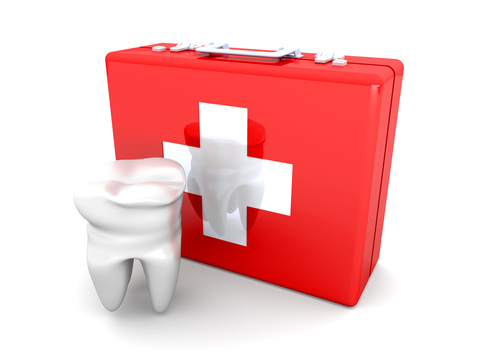June 1st, 2016

If you are wearing braces and are planning a vacation, our team at Convivial Dental would suggest that you be prepared. We put together a list of items that will be handy to have with you at all times while you are out of town. They include:
- Toothpick, flosspick, or other interdental cleaners
- Travel toothbrush
- A water bottle or a mini bottle of mouth rinse
- Orthodontic wax to help with discomfort from protruding wires
- A small mirror for examining any possible issues in your mouth
Putting these items together in a “braces/oral hygiene kit” may be wise. You may even buy pre-made braces kits. Please ask us for more information.
If you happen to be on vacation and experience problems reaching our office, we suggest going online and searching for orthodontic practices in your area. Most orthodontists will lend a helping hand to another orthodontic patient and get him or her out of pain or discomfort.
We also suggest avoiding the following foods to prevent broken brackets and/or wire distortion while you are on vacation:
- Chewy, sticky, or gummy food
- Apples, pears, and other whole fruits (cut fruit into wedges before consuming)
- Bagels and hard rolls
- Corn on the cob
- Hard candies
- Hard cookies or pretzels
- All varieties of nuts, including peanuts, almonds, and cashews
Finally, if you are wearing clear aligners and happen to lose your tray, don’t worry! Simply put in either the previous tray or the next tray and contact us as soon as you get home!
Follow these tips and you can have a worry-free vacation! Please give us a call if you have any questions!
May 25th, 2016

Memorial Day didn't become an official holiday until 1971, but Americans started gathering annually in the spring to remember those who lost their lives in war during the 1860s, right after the Civil War. Celebrated on the last Monday in May, people still decorate the grave sites of war veterans and hold memorial services, but Memorial Day has also evolved into a day that signifies the beginning of summer.
During the summer months, many people take road trips to visit family members. Some head off to the airport to enjoy a long-awaited vacation far away, while others look forward to spending time with friends and family at home. However you spend Memorial Day and the subsequent summer months, there are a few things you can take care of to ensure your summertime is enjoyable.
Checklist for an Enjoyable Summer
- Have the AC Checked. During the hottest days of summer, many families find themselves sweating it out due to a broken air conditioning system. Be proactive so you can avoid waiting for hours or days because the HVAC repair person is booked solid. Have your air conditioning system checked before or around Memorial Day each year.
- Ensure Security While You're Away. When you leave for vacation, the last thing you should have to worry about is the security of your home. Install a home security system, if possible, and put a timer on your lights so they go on and off at normal hours. You can also alert your local police department that you'll be gone, and ask them to drive by your house once in a while to make sure everything is okay.
- Visit Drs. Cartsos and Zavras Before Vacation. Many people put off exams until after summer vacation. Avoid the crowds and make sure your physical and oral health are in top shape prior to vacation time so there are no unpleasant surprises.
Our team at Convivial Dental wants you to look forward to Memorial Day and the days of summer by preparing to spend the time safely and comfortably. As you plan ahead, take care of your health and secure your home, you can place your focus on creating memories with family members and friends while enjoying your favorite Memorial Day traditions.
May 18th, 2016

Drs. Cartsos and Zavras and our team get this question a lot. The word lingual means tongue, and lingual braces work in a similar fashion to regular braces, but with one important difference: Lingual braces are attached to the inside surfaces of the teeth facing the tongue, so they are practically invisible. Plus, they can align your teeth just as effectively as traditional braces. Treatment time with lingual braces at Convivial Dental is similar, too. Of course, each patient’s treatment time depends on his or her unique case.
What are the advantages of lingual braces?
Besides being completely invisible while straightening your teeth, lingual braces are just as efficient as clear aligners when it comes to complex movements such as correcting rotations, closing extraction spaces, or changing the height of your teeth. Plus, any discoloration or white spots that occur from wearing braces will be on the inside of your teeth. Lingual braces are also custom fit to each patient, which ensures a higher level of comfort.
If you have been considering orthodontic treatment, or would like to learn more about how lingual braces work, we encourage you to give us a call at our convenient Chestnut Hill, Massachusetts office. Drs. Cartsos and Zavras and our team at Convivial Dental will be happy to answer all of your questions and help you determine if lingual braces are right for you.
May 11th, 2016

At Convivial Dental, we know orthodontic emergencies are neither convenient nor timely. If you are a patient of record, Drs. Cartsos and Zavras and our team are more than willing to see you after hours or over the weekend. As a general rule, you should call our Chestnut Hill, Massachusetts office when you experience severe pain or when you have a painful appliance problem that you can’t take care of yourself. We’ll be able to schedule an appointment to resolve the problem. If you have an orthodontic emergency after regular office hours, please give us a call and follow the emergency prompts to contact one of our doctors.











